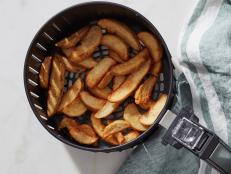What Is the Keto Diet?
The ketogenic diet continues to gain popularity. Here's what you need to know about this low carb, moderate protein and high fat diet plan.

Salima Senyavskaya
The latest fad diet riding on the coat tails of the low-carb trend is the ketogenic diet. This nutrition plan has been around for ages, and has been effectively used in the treatment of epilepsy, but it’s also become popular to help folks shed pounds. Here’s what you need to know about this diet plan before you hop on another fad diet bandwagon.
What Is the Keto Diet?
This diet promotes low carb, moderate protein, and high fat intake touting health benefits such as weight loss and improved overall health. It promotes an extremely low intake of carbs: about 30 grams per day. For the average American on a 2,000 calorie diet, this would be 120 calories of any type of carb per day. You can find carbohydrates in fruits, vegetables, grains, dairy, and legumes — which, when minimized in the diet, limits food choices dramatically. The distribution of macronutrients recommended is 5% carbohydrates, 25% protein, and 70% fat.
The fats recommended include both unsaturated like avocado and fatty fish along with saturated like whole milk, sour cream, and mayonnaise. Flour, sugar, and other such carbs are not recommended on the plan. Only lower carb fruits are recommended including apples, berries, and watermelon in small amounts, low carb vegetables are recommended, and lower carb nuts and seeds (like almonds, walnuts, macadamia nuts, flax seeds, pumpkin seeds) in moderation.
The purpose of taking in so few carbs is to put your body in a ketotic state. As carbs (AKA glucose) is the body’s primary source of energy, 30 grams of carbs runs out quickly forcing the body to utilize fat and some protein (or ketones made from fat) as a source of energy. When excess fat and protein is used for fuel, it creates an acidic environment in the blood, known as acidosis. Long-term keto-acidosis can cause damage to your organs and is potentially deadly. While in this state, the body acts as if it is in starvation mode and other side effects include headaches, fatigue, irritability, and loss of muscle mass.
Transitioning into ketosis is no easy feat. Many complain of having the “keto flu” where they feel fatigued, nauseous and overall fogginess for up to a week until the body regulates itself to being in ketosis. In addition, alcohol can exacerbate the symptoms of the “keto flu” and is recommended to be avoided while on the diet.
The Costs of Going Keto
Although this diet eliminates added sugars, the plethora of protein and fats can cost you a pretty penny (avocados and meat aren’t cheap!). Further, it’s very tough to follow a diet with a maximum limit of 30 grams of carbs, which is equivalent to 2 slices of bread.
This plan also eliminates many food groups, especially most fruits, and there is a limit of low-carb vegetables which have been shown to help lower the risk of chronic diseases like heart disease. According to the Centers for Disease Control (CDC), only 1 in 10 adults take in the recommended daily amount of fruits and vegetables. Eliminating most fruit and vegetables also takes away many important vitamins, minerals, and phytonutrients that can help keep you healthy in the long run.
Other huge costs include taste and sustainability of the diet. Eating loads of meat, cheese, and avocado can get boring and tasteless without fruits, vegetables, grains, and nuts. Go ahead and try it for a few days, or even a week or two, and you’ll miss out on those other food groups in no time.
The Benefits of the Keto Diet
- The diet has been shown to be effective with those with epilepsy to help reduce the number of seizures. These folks are very carefully monitored by a physician.
- Added sugar is decreased dramatically
The Health Risks of the Keto Diet
- It’s a dangerous diet! Setting your body into ketosis can lead to increased acid levels in the blood, which has can have severe health consequences.
- There is a lack of research to the long-term effects of a ketogenic diet as discussed in a 2014 review titled, Ketogenic Diet for Obesity: Friend of Foe? In addition, researchers question the effects of the ketogenic diet on kidney function since the increased protein also increases the use of the kidneys.
- The elimination of multiple food groups removes many nutrients the body needs to stay healthy.
- Many of the foods recommended are high in saturated fat, which can increase your risk of heart disease.
- It is tough to follow this diet at social events or when travelling, and isn’t conducive to a household filled with children.
- The meal plan isn’t tasty, and it’s extremely tough to sustain over a long period of time.
Bottom Line
Between the lack of nutrition, health consequences and lack of flavor, this is one diet plan that just isn’t healthy (or tasty!) to follow.
Toby Amidor, MS, RD, CDN, is a registered dietitian and consultant who specializes in food safety and culinary nutrition. She is the author of The Greek Yogurt Kitchen: More Than 130 Delicious, Healthy Recipes for Every Meal of the Day .
*This article was written and/or reviewed by an independent registered dietitian nutritionist.
Related Links:

































